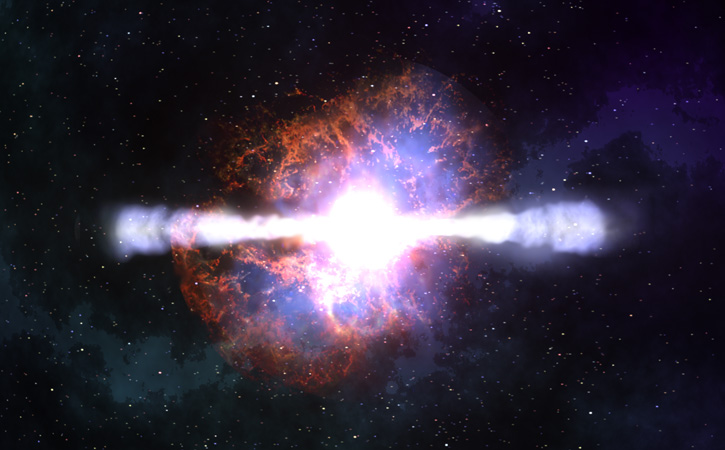
Scientists have theorized that a gamma-ray burst may be responsible for “an unusual level of a radioactive type of carbon known as carbon-14” found in ancient cedar trees in Japan.
“These enormous emissions of energy,” explains BBC News, “occur when black holes, neutron stars or white dwarfs collide - the galactic mergers take just seconds, but they send out a vast wave of radiation.” If the source is within our galactic neighborhood, it might trigger an extinction event, or even something far worse. If much farther afield, say, in another galaxy, most of the radiation is absorbed by the atmosphere, where it triggers an increased production of radioactive elements, which rain down on waiting trees.
Botanical daguerreotypes chemically etched with the remnants of dead celestial spheres; an organic archive of cosmic megaspectaculars. In a sense, then, forests don't constrict your vision, rather they add perspectives, telegraph your gaze into deep space-time.
I can't resist the temptation here of imagining ancient Druidic sects of silviculturists, spread out all over the world, tending to patches of dark woods, steamy jungles and rain forests, astronomical observatories each manned by a hermetic crypto-astronomer recording supernovas, solar flares, the death pangs of black holes, and intergalactic jets of many dark brightnesses. And centuries later, Jodie Foster in the guise of Indiana Jones go out looking for their remnants, an orchid hunter in search of the rarest of rarest astral efflorescences.
Post a Comment —
Comments on posts older than a week are moderated —